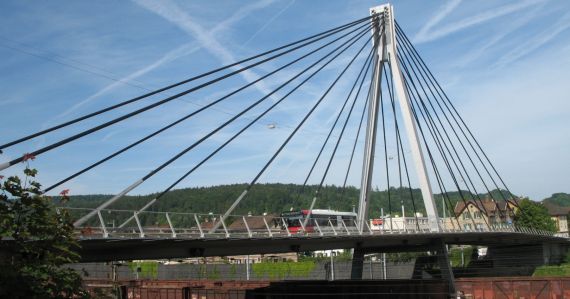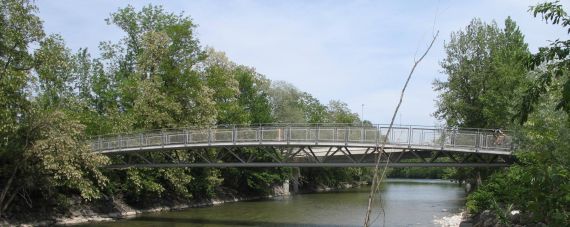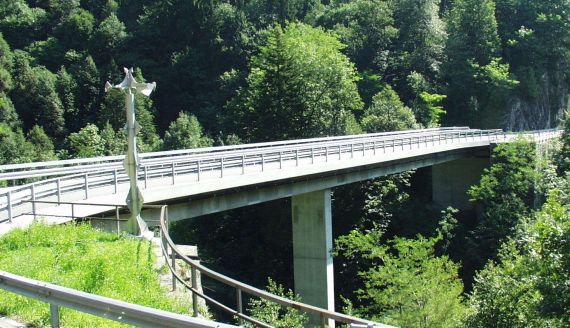Transport at Nanoscale Interfaces
Nanomaterials Spectroscopy and Imaging
Long Term Monitoring of Infrastructure
The loading and aging of traffic infrastructure – mainly bridge structures – as well as new materials like carbon fiber reinforced plastics (CFRP) and budget-cutbacks require health monitoring over decades. Since almost 20 years three bridges in Switzerland were monitored with CFRP-cables. By means of different sensor types like resistance strain gages (RSG), fibre bragg gratings (FBG) and other sensor systems strains, displacements and ambient conditions were measured. Over this long period a reliable data acquisition, data analysis and the measuring uncertainty are essential. Do the measuring data relate to the monitored infrastructure or derive the changes from the sensors itself?
Storck Bridge, Winterthur (since 1996):
This bridge is a 120-m-long symmetric cable-stayed bridge. Two of the 24 cables were made of CFRP, each consisting of 241 CFRP-wires with a diameter of 5 mm. To measure the wire strain, RSGs and FBGs were surface adhered to loaded wires and to unloaded dummy wires for temperature compensation. The average strain of a single CFRP-wire is moderate with 1200 µm/m.

Bridge Kleine Emme, Lucerne (since 1998):
This bridge is a 47-m-long steel–concrete-composite bridge for pedestrians and bicycles. Two CFRP-cables with 91 wires were installed in the steel tube under the bridge deck for pretensioning; each cable was prestressed with 2400 kN. The average strain of a single CFRP-wire is high with 8500 µm/m. Therefore it was of high interest to monitor the wire strains not only in the free part of the cable, but also within the anchor head. FBGs inside the head allowed to measure the decreasing strain. This FBGs were directly embedded in the CFRP-wires during the industrial pultrusion process.

Ponte sul Ri di Verdasio, Centovalli (since 1998):
During operation of this 70-m-long bridge the steel posttensioning cables partially corroded. Therefore, the bridge was retrofitted with four additional CFRP-cables, each prestressed with 600 kN, which induced very high strains of 9500 µm/m into a single CFRP-wire. Here, the eight anchor heads were equipped with RSGs to measure the cable forces. The pull-in of the CFRP wires into the head was measured with a caliper gauge.

-
Share

